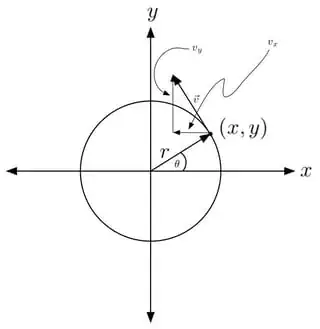I learned from my Physics textbooks that there is zero net work (W) done by the force when moving a particle through a trajectory that starts and ends in the same place i.e.
$$W=\oint{\vec{F}.d\vec{r}}=0$$
Now, I need to verify whether the force $$\vec{F}=\dfrac{x \hat{i} + y \hat{j}}{(x^2+y^2)^{\frac{3}{2}}}$$ is conservative or not.
I substituted $x=r\cos(\theta)$ and $y=r\sin(\theta)$, in order to prove that if I move a body by applying the given force through a complete circle then the work done will be zero.
Now, suppose I start from $\theta=0$ and move anticlockwise then my unit vector for displacement at any angle $\theta$ should be $-\sin(\theta) \hat{i} + \cos(\theta) \hat {j}$.
So total work done in traversing the circular path is
$$W'=\int_{0}^{2\pi}{\dfrac{(r\cos(\theta)\hat{i}+r\sin(\theta)\hat{j})(-\sin(\theta)\hat{i}+\cos(\theta)\hat{j})(rd\theta)}{[r^2\cos^2(\theta)+r^2\sin^2(\theta)]^{\frac{3}{2}}}}=0$$
Now is showing $W'=0$ sufficient to prove that $\vec{F}$ is conservative ? Also, is their any easier way ?
